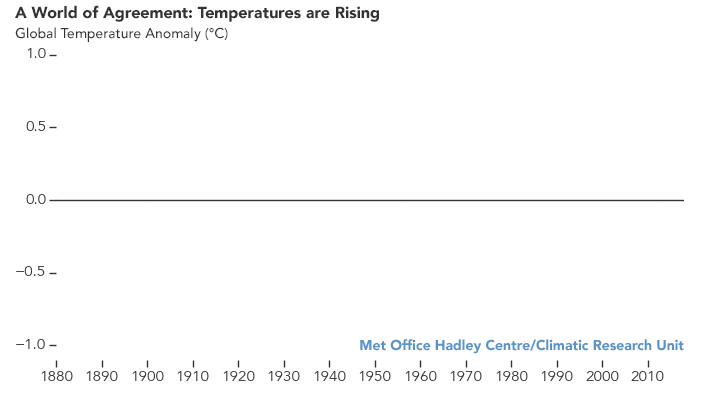NOAA's 2018 Report on World Weather and Climate
In separate analyses of global temperatures, scientists from NASA, the United Kingdom Met Office and the World Meteorological Organization also reached the same heat ranking.
https://www.youtube.com/watch?v=6r5wKrC7p50Here are a few highlights from NOAA’s findings:
2018 global temperatures

-
The average global temperature during 2018 was 1.42 degrees F above the 20th-century average. This marks the 42nd consecutive year (since 1977) with an above-average global temperature. Nine of the 10 warmest years have occurred since 2005, with the last five years comprising the five hottest.
-
The globally averaged sea surface temperature was 1.19 degrees F above average, while the land surface temperature was 2.02 degrees above average, both the fourth highest on record.
-
Much of Europe, New Zealand and parts of the Middle East and Russia had record high land temperatures. Parts of the southern Pacific Ocean and parts of the north and south Atlantic Ocean also tallied record-high sea-surface temperatures.
 [This line plot shows yearly temperature anomalies from 1880 to 2018, with respect to the 1951-1980 mean, as recorded by NASA, NOAA, the Japan Meteorological Agency, the Berkeley Earth research group, and the Met Office Hadley Centre (UK). Though there are minor variations from year to year, all five temperature records show peaks and valleys in sync with each other. All show rapid warming in the past few decades, and all show the past decade has been the warmest. Credits: NASA’s Earth Observatory]
[This line plot shows yearly temperature anomalies from 1880 to 2018, with respect to the 1951-1980 mean, as recorded by NASA, NOAA, the Japan Meteorological Agency, the Berkeley Earth research group, and the Met Office Hadley Centre (UK). Though there are minor variations from year to year, all five temperature records show peaks and valleys in sync with each other. All show rapid warming in the past few decades, and all show the past decade has been the warmest. Credits: NASA’s Earth Observatory]
2018 U.S. billion-dollar weather and climate disasters
-
In 2018, the U.S. experienced 14 weather and climate disasters, each with losses exceeding $1 billion and all totaling around $91 billion in damages. Both the number of events and their cumulative cost ranked fourth highest since records began in 1980.
-
Topping the list were Hurricane Michael, which caused $25 billion in damages, followed by the western U.S. wildfires and Hurricane Florence, which each caused $24 billion in damages.
-
Most important was the human toll: At least 247 people died and many more were injured by the 14 disasters.

2018 U.S. climate highlights

-
In the U.S., last year’s weather story was more about wetness than heat. Precipitation for the contiguous U.S. averaged 34.63 inches (4.69 inches above average), the third wettest year in the 124-year record.
-
Much-above-average precipitation to record-high precipitation fell across much of the contiguous U.S. east of the Rockies.
-
The average temperature for the contiguous U.S. was 53.5 degrees F (1.5 degrees above average), making 2018 the 14th warmest year on record. This was the 22nd consecutive warmer-than-average year for the U.S.
-
Much of the contiguous U.S. was warmer than average, particularly west of the Rockies and across the coastal Southeast. Most of the Northern Plains and Upper Midwest experienced near-normal temperatures.
 You can read the full report from NOAA's NCEI 2018 global climate analysis, listen to the 2018 weather and climate conference call, and the U.S. billion-dollar weather and climate disasters.
Edited for WeatherNation by Meteorologist Mace Michaels
You can read the full report from NOAA's NCEI 2018 global climate analysis, listen to the 2018 weather and climate conference call, and the U.S. billion-dollar weather and climate disasters.
Edited for WeatherNation by Meteorologist Mace Michaels